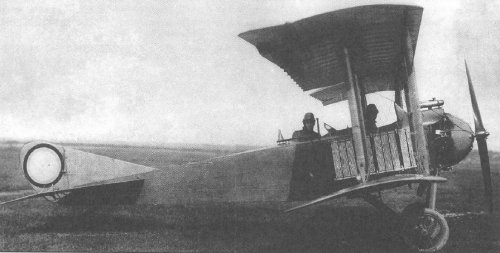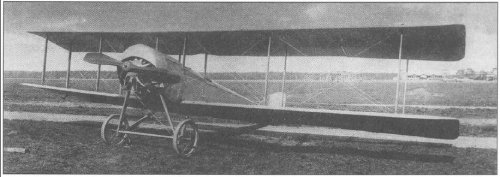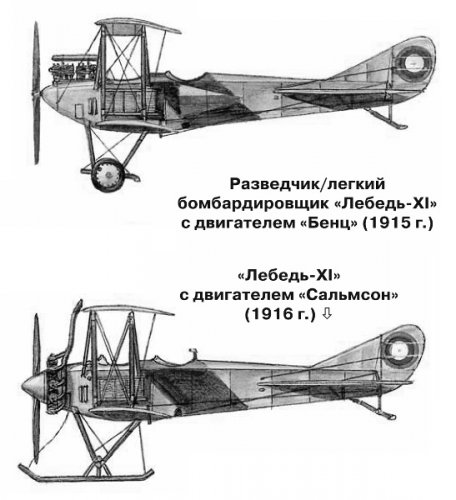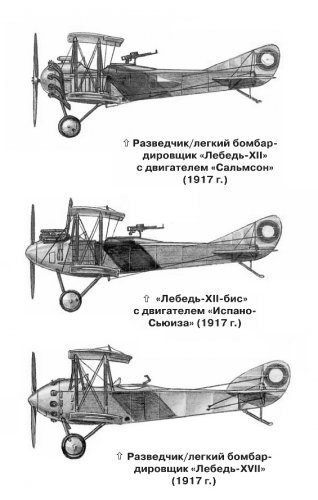- Joined
- 28 January 2008
- Messages
- 628
- Reaction score
- 448
V.A.Lebedev
Vladimir Alexandrovich Lebedev was a qualified lawyer and had an interest in bicycle racing before discovering an interest in aviation. He studied flight at the Farman Flying School in France in 1909. In 1912 in St Petersburg he started an airscrew manufacturing concern. After two losses of premises through fire he used his insurance money, received in April 1914, to set up the Aeronautical Joint-Stock Company of V A Lebedev. This was based close to the Komendantsky airfield. The firms telegraph address was LEBED and this name was often used to identify his designs. Lebed conveniently translates as Swan from the Russian.
The distinguished historian Shavrov stated that there were 24 models with Roman numeral designations. Not all have been identified.
Prior to World War I the concern produced Deperdussin, Nieuport and Voisin designs at a rate of six per month. In 1915 Lebedev began copying Albatros designs from Germany. During the early war period the manufacturing plant and production grew to produce 35 aircraft per month. As well as aircraft, the firm also produces skis, radiators and airscrews.
In 1916, there were plans to open new factory units at Taganrog in Southern Russia and Penza in the Volga Province area. The Taganrog factory was ready just as the October revolution occurred and was taken over by the state as GAZ No.10. The Penza concern was not completed until 1919, due to the political instability of the time. It became GAZ No.7.
Lebedev as a company had few qualms about copying designs with little or no permission. Of the early designs (Types I, II, III, IV, V & VI) these were mostly captured examples, repaired and modified locally. At the time most German fighter were recorded in Lebedev documentation sources as Albatros designs regardless of their real designations.
Lebedev Deperdussin D [1914]
Two-seat reconnaissance monoplane
63 Deperdussin monoplanes fitted with a single 80 hp Gnome-Rhone engine were constructed by the Lebedev concern for the Russian military.
Lebedev Voisin L Type [1914]
Reconnaissance aircraft
In July 1914 Lebedev began produces examples of the French Voisin L aircraft. Production was split into two types, the LA and LAS. Both variants had Salmson radial engines
Lebedev Franco British Aviation Type C [1914]
Maritime reconnaissance flying boat
Between 1914 and 1916 the Lebedev factory produced examples of the Franco British Aviation (FBA) Type C flying boat for use by the Imperial Russian Navy.
POWERPLANT NO: 1
POWERPLANT TYPE: Clerget
POWERPLANT CAPACITY: 130 hp
FIRST FLIGHT: 1914
Lebedev Morane Type L [1915]
Reconnaissance aircraft
During 1915 around 30 of this French type were produced.
Lebedev Pusher [1916]
Fast Pusher Experimental Biplane
A design for a pusher biplane with 110 hp Renault or 140 hp Salmson engine. Project from V.A.Lebedev promised for April 1916.
POWERPLANT NO: 1
POWERPLANT TYPE: Salmson or Renault
POWERPLANT CAPACITY: 140 hp or 110 hp
FIRST FLIGHT: April 1916 (Projected)
Lebedev Albatros (Fiat) Type A.8 [1916]
Fiat Powered Experimental
An Albatros based design with a 100hp Fiat engine. Three were built in 1916 but were an obsolete type even before entering service.
POWERPLANT NO: 1
POWERPLANT TYPE: Fiat
POWERPLANT CAPACITY: 100 hp
FIRST FLIGHT: 1916
PRODUCTION: 3
RATE OF CLIMB: 25 minutes to 1,000 m
Lebedev Albatros (Sunbeam) Type A.2 [1916]
Sunbeam Powered Experimental
Albatros derivitive with a 150 hp Sunbeam engine. Few built in 1916, obsolete type before entering service.
POWERPLANT NO: 1
POWERPLANT TYPE: Sunbeam
POWERPLANT CAPACITY: 150 hp
FIRST FLIGHT: 1916
Lebedev Albatros ML Floatplane [1916]
Experimental floatplane type
Copy of a German 'Albatros' with 200hp Hispano-Suiza engine. On June 14, 1917 an order for 175 such aircraft was placed on Lebedev factories, but only two emerged in December 1917 from the Taganrog factory. ML denoted Morskoi Lebed (Morskoi denoting Navy).
POWERPLANT NO: 1
POWERPLANT TYPE: Hispano-Suiza
POWERPLANT CAPACITY: 200 hp
FIRST FLIGHT: 1917
ENTERED SERVICE: NOT KNOWN
PRODUCTION: 2
Lebedev Albatros FF33h Type [1916]
Biplane.
This was the last naval Albatros type. Modelled on the Friedrichshafen FF33h but with no known official Lebedev designation.
Lebedev FBA Type [1916]
Biplane flying boat.No specific Lebedev designation.
Licence built.
Lebedev Farman MF Type [1916]
Biplane floatplane.
Licence built and fitted with floats. No specific Lebedev designation.
Lebedev LR-1 [1916]
Armed naval reconnaissance
POWERPLANT NO: 1
POWERPLANT TYPE: Sunbeam
WING SPAN: 15.1 m
LENGTH: 10.5 m
MAXIMUM TAKE OFF WEIGHT: 1,455 kg
MAXIMUM SPEED: 110 km/h
FIRST FLIGHT: 1916
Vladimir Alexandrovich Lebedev was a qualified lawyer and had an interest in bicycle racing before discovering an interest in aviation. He studied flight at the Farman Flying School in France in 1909. In 1912 in St Petersburg he started an airscrew manufacturing concern. After two losses of premises through fire he used his insurance money, received in April 1914, to set up the Aeronautical Joint-Stock Company of V A Lebedev. This was based close to the Komendantsky airfield. The firms telegraph address was LEBED and this name was often used to identify his designs. Lebed conveniently translates as Swan from the Russian.
The distinguished historian Shavrov stated that there were 24 models with Roman numeral designations. Not all have been identified.
Prior to World War I the concern produced Deperdussin, Nieuport and Voisin designs at a rate of six per month. In 1915 Lebedev began copying Albatros designs from Germany. During the early war period the manufacturing plant and production grew to produce 35 aircraft per month. As well as aircraft, the firm also produces skis, radiators and airscrews.
In 1916, there were plans to open new factory units at Taganrog in Southern Russia and Penza in the Volga Province area. The Taganrog factory was ready just as the October revolution occurred and was taken over by the state as GAZ No.10. The Penza concern was not completed until 1919, due to the political instability of the time. It became GAZ No.7.
Lebedev as a company had few qualms about copying designs with little or no permission. Of the early designs (Types I, II, III, IV, V & VI) these were mostly captured examples, repaired and modified locally. At the time most German fighter were recorded in Lebedev documentation sources as Albatros designs regardless of their real designations.
Lebedev Deperdussin D [1914]
Two-seat reconnaissance monoplane
63 Deperdussin monoplanes fitted with a single 80 hp Gnome-Rhone engine were constructed by the Lebedev concern for the Russian military.
Lebedev Voisin L Type [1914]
Reconnaissance aircraft
In July 1914 Lebedev began produces examples of the French Voisin L aircraft. Production was split into two types, the LA and LAS. Both variants had Salmson radial engines
Lebedev Franco British Aviation Type C [1914]
Maritime reconnaissance flying boat
Between 1914 and 1916 the Lebedev factory produced examples of the Franco British Aviation (FBA) Type C flying boat for use by the Imperial Russian Navy.
POWERPLANT NO: 1
POWERPLANT TYPE: Clerget
POWERPLANT CAPACITY: 130 hp
FIRST FLIGHT: 1914
Lebedev Morane Type L [1915]
Reconnaissance aircraft
During 1915 around 30 of this French type were produced.
Lebedev Pusher [1916]
Fast Pusher Experimental Biplane
A design for a pusher biplane with 110 hp Renault or 140 hp Salmson engine. Project from V.A.Lebedev promised for April 1916.
POWERPLANT NO: 1
POWERPLANT TYPE: Salmson or Renault
POWERPLANT CAPACITY: 140 hp or 110 hp
FIRST FLIGHT: April 1916 (Projected)
Lebedev Albatros (Fiat) Type A.8 [1916]
Fiat Powered Experimental
An Albatros based design with a 100hp Fiat engine. Three were built in 1916 but were an obsolete type even before entering service.
POWERPLANT NO: 1
POWERPLANT TYPE: Fiat
POWERPLANT CAPACITY: 100 hp
FIRST FLIGHT: 1916
PRODUCTION: 3
RATE OF CLIMB: 25 minutes to 1,000 m
Lebedev Albatros (Sunbeam) Type A.2 [1916]
Sunbeam Powered Experimental
Albatros derivitive with a 150 hp Sunbeam engine. Few built in 1916, obsolete type before entering service.
POWERPLANT NO: 1
POWERPLANT TYPE: Sunbeam
POWERPLANT CAPACITY: 150 hp
FIRST FLIGHT: 1916
Lebedev Albatros ML Floatplane [1916]
Experimental floatplane type
Copy of a German 'Albatros' with 200hp Hispano-Suiza engine. On June 14, 1917 an order for 175 such aircraft was placed on Lebedev factories, but only two emerged in December 1917 from the Taganrog factory. ML denoted Morskoi Lebed (Morskoi denoting Navy).
POWERPLANT NO: 1
POWERPLANT TYPE: Hispano-Suiza
POWERPLANT CAPACITY: 200 hp
FIRST FLIGHT: 1917
ENTERED SERVICE: NOT KNOWN
PRODUCTION: 2
Lebedev Albatros FF33h Type [1916]
Biplane.
This was the last naval Albatros type. Modelled on the Friedrichshafen FF33h but with no known official Lebedev designation.
Lebedev FBA Type [1916]
Biplane flying boat.No specific Lebedev designation.
Licence built.
Lebedev Farman MF Type [1916]
Biplane floatplane.
Licence built and fitted with floats. No specific Lebedev designation.
Lebedev LR-1 [1916]
Armed naval reconnaissance
POWERPLANT NO: 1
POWERPLANT TYPE: Sunbeam
WING SPAN: 15.1 m
LENGTH: 10.5 m
MAXIMUM TAKE OFF WEIGHT: 1,455 kg
MAXIMUM SPEED: 110 km/h
FIRST FLIGHT: 1916




